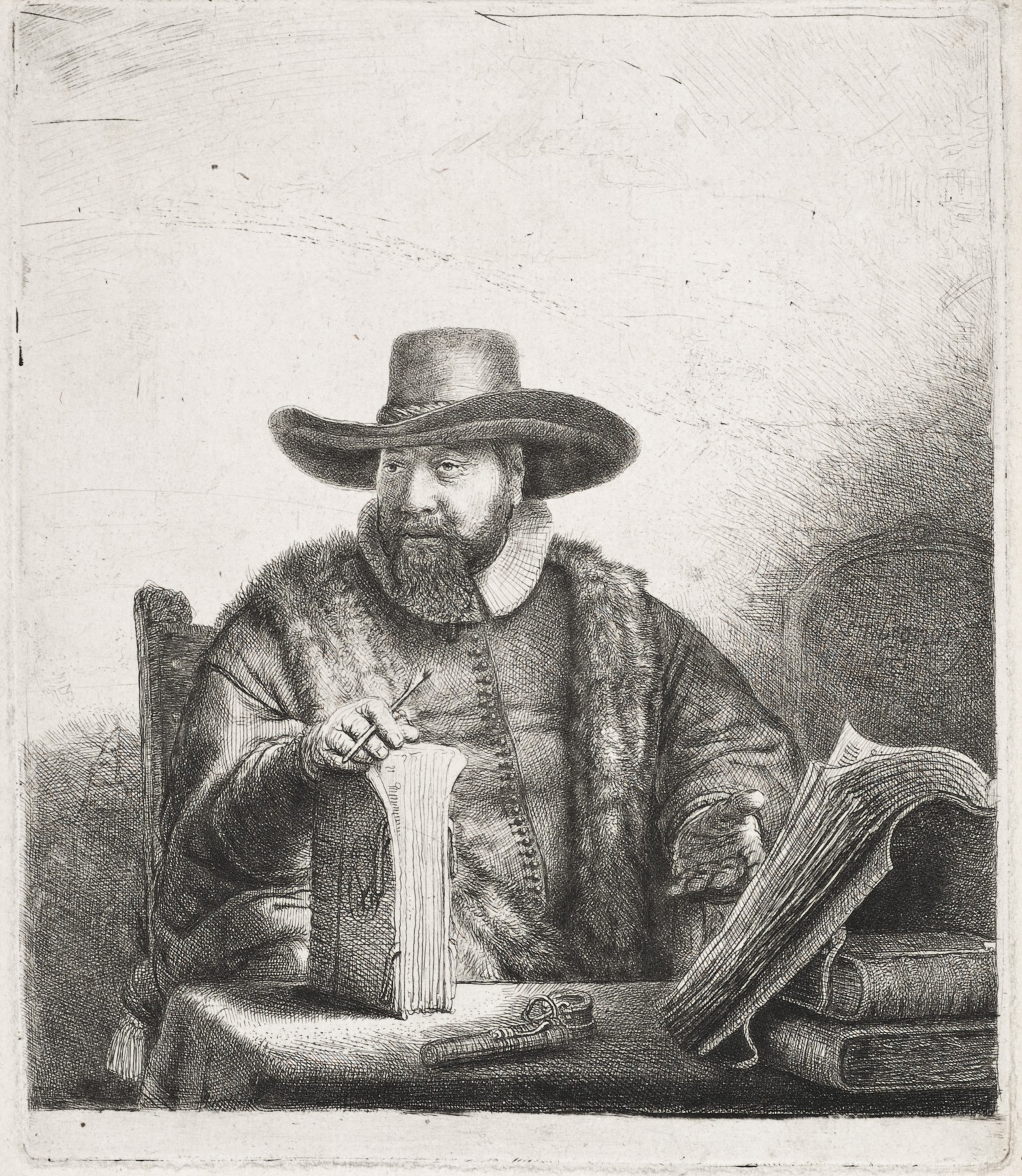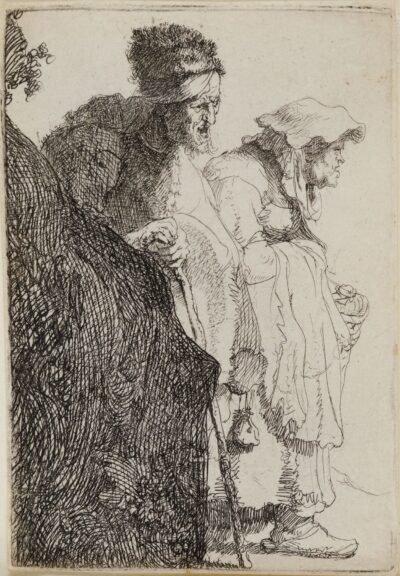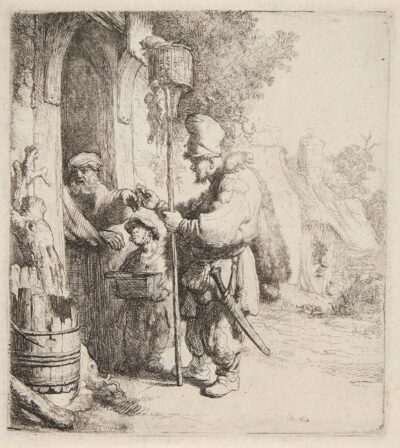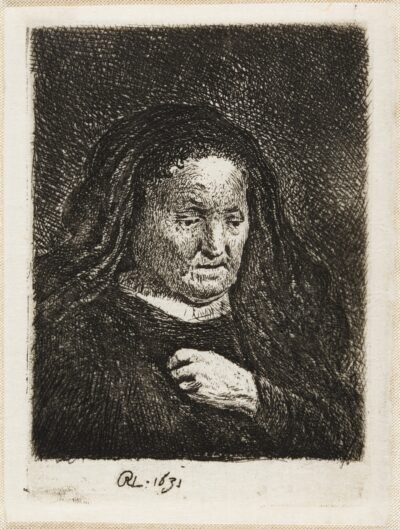Cornelis Claesz Anslo, Preacher
Rembrandt Van Rijn
CORNELIS CLAESZ ANSLO, PREACHER
Etching & Drypoint
1641
An original Rembrandt Van Rijn Etching & Drypoint print.
1641
Original etching and drypoint printed in black ink on chine applique (China paper mounted on wove paper).
Signed and dated in the plate on the dark tablet at the right Rembrandt f. 1641 (indistinct).
A fine, clear and clean 19th century impression of Bartsch’s second and final state, Usticke’s fourth state of six, New Hollstein’s fourth state of five. Showing no wear, printed after the blank strip at the lower edge of the plate which had been covered over with shading was burnished clean again by Captain William Baillie to remove this shading.
Catalog: Bartsch 271 ii/ii; Hind 187; Biorklund-Barnard 41-I; Usticke 271 iv/vi; New Hollstein 197 iv/v.
7 5/16 x 6 1/4 inches
Sheet Size: 7 15/16 x 6 13/16 inches
Cornelis Claesz Anslo (1592-1646) was the preacher of the Mennonite community of the Waterlanders of Amsterdam. He wrote various theological works in which he defended Mennonite orthodoxy against the attacks of the Socinians. The same year as the completion of this plate, Rembrandt painted a portrait of Anslo with a woman who is probably his wife.
Rembrandt makes reference to the sitter’s occupation in the manner of his representation. Anslo hold an upturned book in his right hand, with a pen hel between the fingers, and, with his other hand outstretched in an oratorical gesture, explains a passage from the Bible.
The addition to the etching of the framed picture which has been taken down from its nail and turned to face the wall had a symbolic purpose, alluding to the Protestant belief that salvation can only be communicated through the word, thus denying the role accorded the image by Catholics. A similar theme in a different context is echoed in the poem probably composed for this print by Vondel, which although never inscribed on the plate, was written in manuscript on several impressions: “On Cornelis Anslo / O Rembrandt, paint Cornelis voice! / His outward appearance is the least of him. / What is invisible, one can only learn by ear; / He who wants to see Anslo must hear him”.




